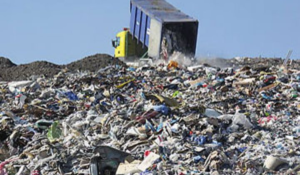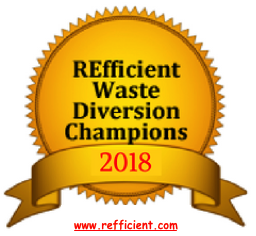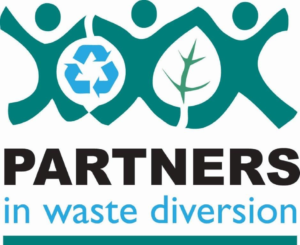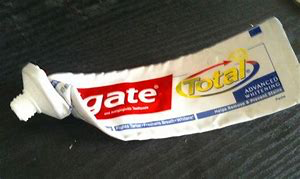
PERSPECTIVE
I was recently tabling at the local county fair for our Master Composting and Recycling booth, and found I could draw in some passers-by with the cold question: “Do you know what the word of the day is?” If they nibbled, I’d say, “Well, it’s actually two words: “Waste Diversion.” And maybe we’d be able to go a bit deeper into what that phrase means and implies.
(Plus, we had an active worm bin nearby, so if they wavered, I could usually entice them in with “Wanna see some worms?” Most people do, it seems.)
I invite you to say out loud those two key words: “Waste Diversion” – – and not just to yourself. Engage your friends and family with this topic and see what comes up. What does “Waste Diversion” mean and imply? I believe it is both a pivotal global concept that also has significant standing in our everyday lives. And where that phrase generally moves a conversation is toward an inquiry into “diversion from what?”
Then you’re quickly at the bottom line of the issue, which is so often obscured and ignored: LANDFILLS. A quick search on landfills will turn up lots of stirring facts and pix. Our so-called friends at the EPA estimate that Americans generate almost 5 pounds of trash per day per person, which is almost twice as much trash per person as most other major countries and adds up to 250 million tons per year. (See How Stuff Works.) And what do we know about the rate of population growth?
Well, “Waste Diversion” is whatever actions keep garbage away from landfills (and incinerators). It usually means reducing consumption and repurposing, recycling or composting everything possible. 
About a third of that 250 million tons of trash tries to get recycled, although so much is contaminated that a lot of what we think is getting recycled actually ends up in landfills anyway. And the purpose of landfills is not to break down trash, but merely to hold it. Things there not only don’t decompose well, they frequently become toxic. And when a landfill is “full” and stops accepting new solid waste, the site, including nearby groundwater, must still be serviced for another 30 years or more to hopefully prevent it from becoming yet another human-created SuperFund site.


There is no “away.” Diverting solid waste from our increasingly bloated landfills is of paramount importance. Please try saying the phrase “Waste Diversion” to others to bring it closer to the forefront of our noble collective consciousness, so that we consume less, which is the single greatest contribution to diverting waste from landfills.
As Ivanka Trump’s dubious fashion line came crumbling down recently, one site suggested a good mantra: “Stop buying crap and companies will stop making crap.” (Fast Company)
PRACTICAL
Packaging is one of the largest culprits in waste creation, especially single-use items, where the packaging is instantly thrown “away.” In the Summer (2018) issue of its Bulletin, AARP offered “99 Great Ways to Save,” and most of them were about saving money. But I sorted out some of these helpful ideas for their capacity to also save on trash generation, especially plastic. Here are a few DIY “Great Ways” to save on wasteful packaging:
- Make your own window cleaner (and reuse the spray bottle): mix equal parts vinegar and water, with maybe a few drops of dishwashing liquid. Voila!
- Same for dryer sheets: just soak a small sponge in 1 part fabric softener, 2 parts water; wring and toss in the dryer. Sweet!
- Indigestion? Avoid brand name (heavily packaged) remedies, which are mostly just baking soda and aspirin. Instead drink ¼ teaspoon baking soda dissolved in ¼ cup water. Ahhh.
- Most commercial shampoos are over-concentrated. You can easily dilute them and stretch the time between purchases.
- Set up to pay bills electronically, even automatically, and reduce paper use considerably.
- Regular Rx user? Get an inexpensive pill-splitter
 (or use the one that’s been hanging around), then order twice the strength of your medication and split the difference, as it were. Many fewer pill bottles to dispose of!
(or use the one that’s been hanging around), then order twice the strength of your medication and split the difference, as it were. Many fewer pill bottles to dispose of!
And a few more easy, helpful ideas for reducing consumption (culled from Rotten Truth about Garbage):
- Take your own carrying bags when shopping.
 Reuse brown paper and plastic bags.
Reuse brown paper and plastic bags.- Reuse and refill containers. (Buy in bulk!)
- Use back sides of paper for scrap paper.
- Use old envelopes for notes.
- Buy and sell at rummage sales.
- Donate items no longer needed to charity.
- Use cloth napkins and cloth rags.
- Repair items or have them repaired.
- Use rechargeable batteries.
-
Use Sunday comics for wrapping paper.
FINER POINT
Did you know that you can recycle empty toothpaste tubes?! You can’t throw them in the curbside bin, but TerraCycle (a global leader in recycling hard-to-recycle waste)has partnered with Colgate to offer a FREE, oral care packaging recycling program.  Besides toothpaste tubes and caps, they also take toothbrushes, toothpaste cartons, toothbrush outer packaging and floss containers from ANY brand. Check it out!
Besides toothpaste tubes and caps, they also take toothbrushes, toothpaste cartons, toothbrush outer packaging and floss containers from ANY brand. Check it out!
And some enlightened grocery stores (such as the Community Food Co-op in downtown Bellingham, pictured here)  will take cosmetic containers for recycling, so save up those lip balm tubes and other cosmetic vessels and bring them along when you go shopping there. If your local food store doesn’t seem to recycle such things, ask someone and then suggest that they do, as an important community service!
will take cosmetic containers for recycling, so save up those lip balm tubes and other cosmetic vessels and bring them along when you go shopping there. If your local food store doesn’t seem to recycle such things, ask someone and then suggest that they do, as an important community service!
Many thanks for your good efforts! 



